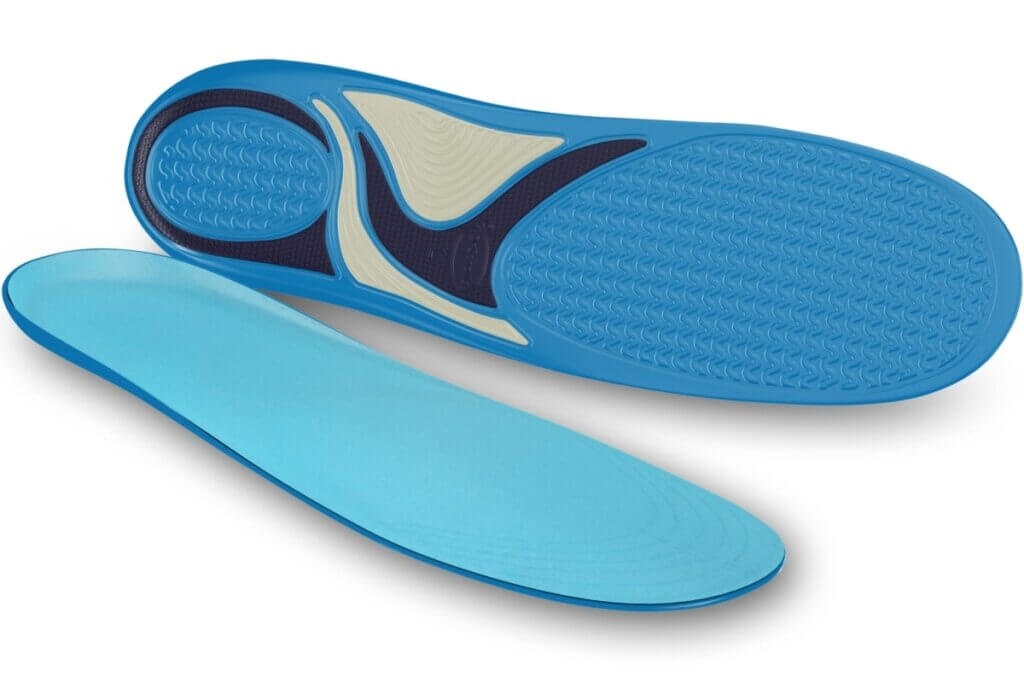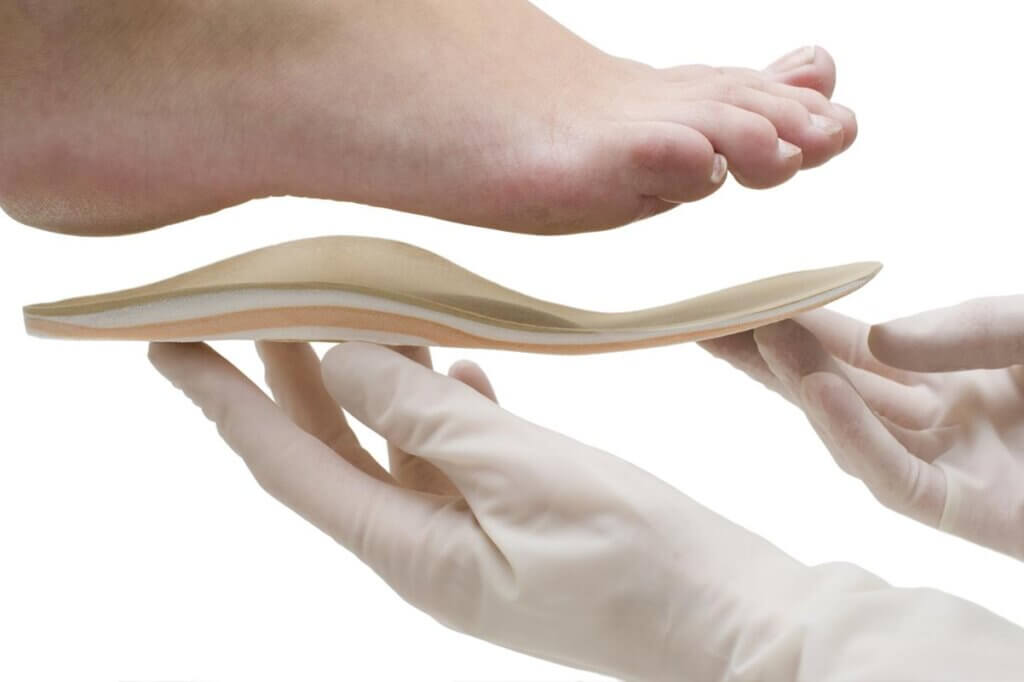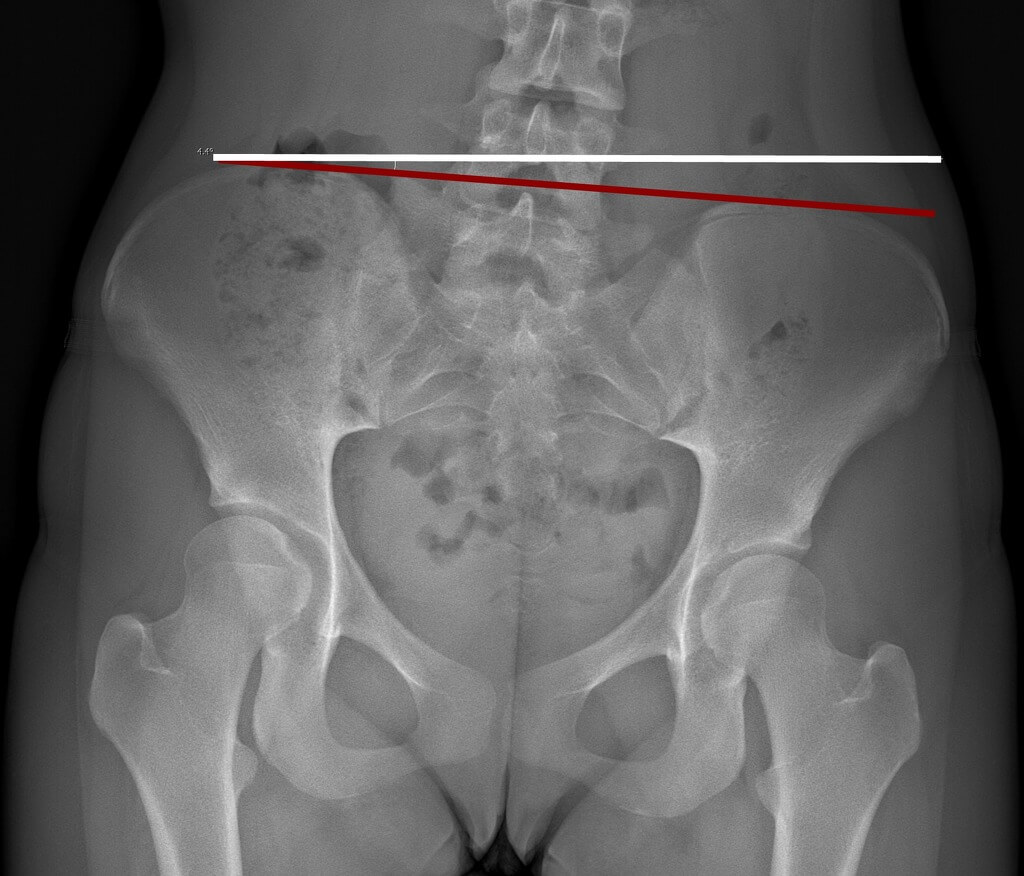Firstly, there is a big difference between insoles and custom orthotics. The easiest way to describe an insole is to compare it to the ones that already exist in your day to day trainers. They tend to be soft and comfortable however provide very little support for your feet. On the other hand custom orthotics are prescription devices which are designed to help restore the optimal biomechanics in your feet whilst walking, running or during your chosen physical activity.
Insoles

Insoles are off the shelf inserts which adopt a ‘one size fits all’ approach. If you solely require some shock absorption and general cushioning for your work or sports shoes, then these will be adequate. They may also have a degree of small arch support however will provide little control for your foot whilst moving.
Manufactures will often claim that their insoles will help with a wide range of conditions including flat feet, plantar fasciitis, metatarsalgia, achilles tendonopathy… the list goes on. However these different conditions require very specific components which you simply cannot get from a standardised device. Depending on use, insoles tend to last for roughly 6 months so can be costly over time.
Orthotics

Fully custom orthotics can only be prescribed by a professional with specialist training. Firstly the practitioner will gather a detailed subjective history to understand your main complaint, general health and current level of physical activity. An orthopaedic assessment is carried out determining the function of your muscles and joints. Your walking and running gait will be assessed to help guide the practitioner about what type of foot gait you adopt during movement and to detect any biomechanical abnormalities which may be contributing to your complaint.
Our bodies are unique and it is not uncommon for your left foot to be significantly different to your right foot i.e, difference in length and width, you may have a bunion on one foot and not the other, or a reduced arch height from left to right. All of these factors will require a specific personalised prescription. You may also have developed a significant leg leg difference which will in turn places increased pressure into the ankle, knee, hip, lower back and even up to the neck. Only custom orthotics will be able to address these individualised issues. Patients who opt for custom orthotics tend to take out an insurance policy which covers loss, damage and any further adjustments needed. This means that the devices will last a lifetime if the insurance is kept up to date.
At Care for Health we treat a wide range of conditions which are successfully treated with custom orthotics. Here are a just a few…
Plantar fasciitis
The plantar fascia is a thick band of soft tissue that supports the arch of the foot and absorbs shock whilst walking and running. If you have a flatter arch without the appropriate support from footwear, the plantar fascia will be under increased tension leading to microtears in the tissue eventually leading to pain. A custom orthotic device will help to restore the height in the arch preventing further damage and restoring optimal biomechanics during movement.
Metatarsalgia
This condition is an inflammation between any one of the metatarsal bones in the foot. There are a number of reasons why this can start including, poor fitting footwear, faulty walking or running biomechanics, or a sudden increase of activity placing increased load through the joints. A custom orthotic device can help with this by offloading the metatarsals with a ‘metatarsal dome’. This dome is specifically placed onto the orthotic to help decompress the joints and restore normal movement reducing pain.
Low back pain
Orthotics can indirectly aid the treatment of low back pain. As stated earlier it can be common to have one leg longer than the other. This in turn will cause the pelvis to tilt and place increased pressure on the joints and muscles of the lower back. By either manually measuring or using specific measurements from an x-ray we are able to add the exact amount of heel lift required to restore equal leg length thus restoring normal function of the pelvis and low back.

If you experiencing pain during walking, running or during your chosen activity, ensure to get your foot biomechanics and gait analysed by the professionals at Care for Health who will get you back on the right path keeping you active.
Adam Harrison, BSc

